Fascinating Animal Facts You Need To Know
Animals are all around us, from the large to the small, and this article is here to show you some surprising facts about our animal friends– wild and domestic.
So, let’s check out some truly fascinating facts. You will be amazed at what animals are capable of doing. Read on and uncover the truths about the animals that share our world.
Dolphins Have Names For Each Other
Dolphins are considered one of the world’s most intelligent animals. However, not many know about their complex language. They are incredibly social animals with an inherent ability to interact with their fellow dolphins.

Source: Fanpop.com/ Pinterest
Similar to humans, they also give each other names– in the form of unique sounds, such as clicks or whistles. This fact was discovered in the 1960s when scientists observed how dolphins responded to their signature whistle. Wow, geniuses of the sea!
Reindeers’ Eyes Change Colors According To The Season
It has been observed that the color of a reindeer’s eyes changes along with the season. Whenever it’s foggy, snowy, or cloudy, reindeer’s eyes turn blue-gray. But they turn bright yellow when the sun is out and the sky is clear.
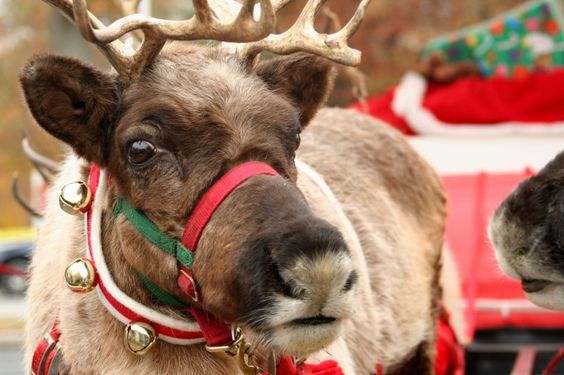
Source: blog.murdochs.com/ Pinterest
If you have the opportunity to get close to a reindeer, make sure to look at its eyes. These color changes are thought to be connected to a blood vessel increase on the surface of their eyes as well.
Chickens Can Survive Without A Head
Chickens can survive without a head. Yes, you read that right! This fact was discovered when a decapitated chicken lived for 18 months. The chicken, dubbed “Mike,” caught the attention of numerous scientists.
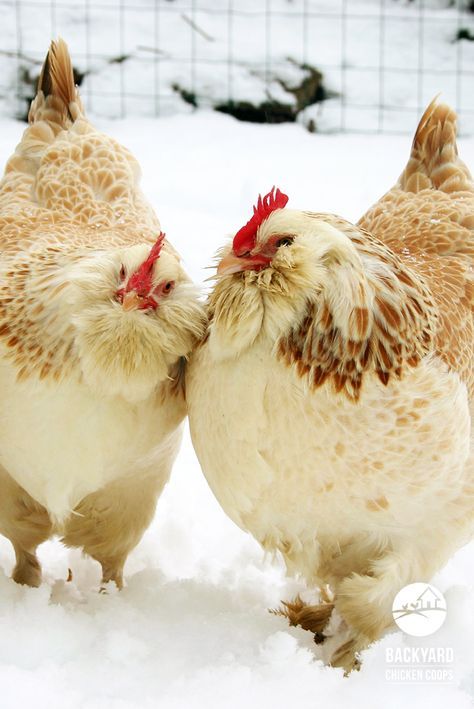
Source: backyardchickencoops.com.au/ Pinterest
Those scientists revealed that his brain stem was intact even after his head was chopped off. So essentially, he was still able to have control of his body.
Snails’ Eyes Can Regenerate
Snails are fascinating creatures. Specifically, their eyes can grow even after being cut off. Or if their eye gets injured, it can easily regenerate.
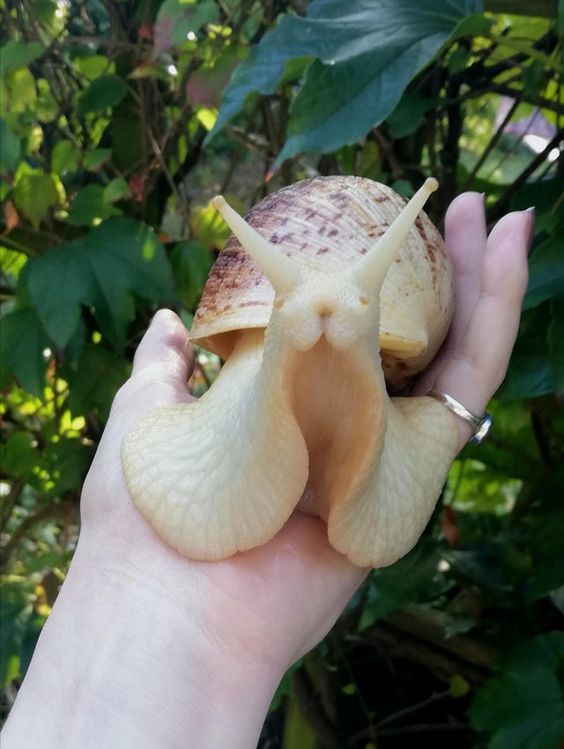
Source: Reddit.com/ Pinterest
The process, called invagination, is made possible by their epithelial cells, which produce a cleft within the snail’s antenna. The cells will then create a retina lens within fourteen days.
Gender-Changing Oysters
Oysters can transform their gender. Though numerous oysters start as males, they don’t remain the same gender for the rest of their lives. It has been recorded that when there are not enough females, males will convert to become females to give birth to more oysters.
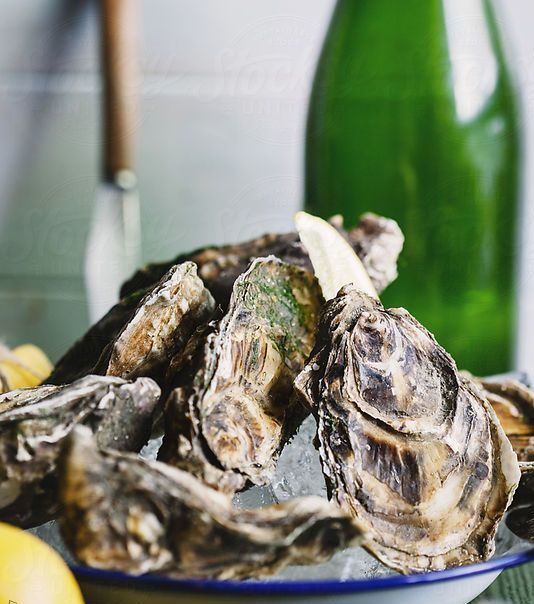
Source: stocksy.com/ Pinterest
Many also believe that oysters are natural aphrodisiacs. However, this claim has yet to be confirmed by science.
Cats Meow Only For Humans
Though cats are lovable pets, they can also be manipulative. They have developed various sounds to communicate effectively with other animals and their fellow cats. And their “meow” has been created especially for humans.

Source: Cattime.com
Cats discovered that humans pay attention to them whenever they “meow.” They do not meow at their fellow cats or other animals, just us humans!
Starfish See The World Through Five Eyes
We all know starfish can have five arms, but did you know they have five eyes? You might believe that since a starfish has no face, it has no eyes. But its eyes are located in a place not many would expect.
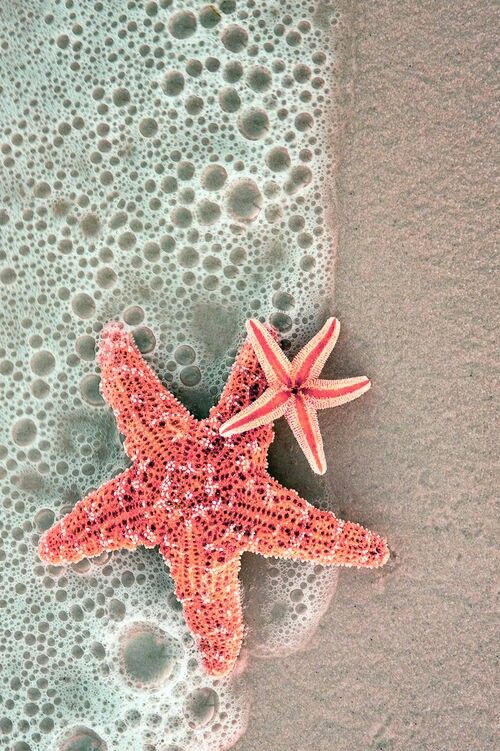
Source: Bebe Love/ Pinterest
A starfish’s eyes are located on its five arms. This makes sense, considering that they also move using their arms– they need to see where they’re going, after all.
Butterflies Use Their Feet To Taste Food
Butterflies taste food using their feet due to the presence of sensors. That’s how they know a flower’s taste the second they land on one!
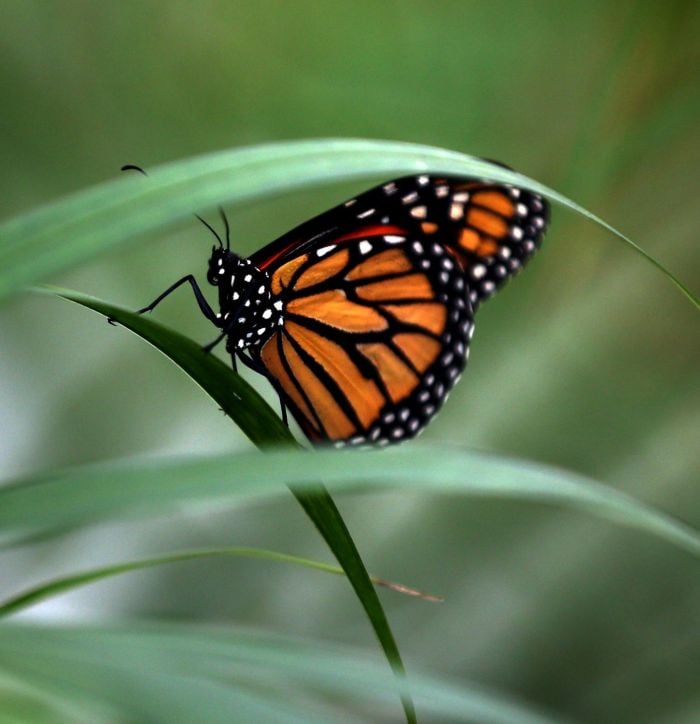
Getty Images
These sensors detect chemicals and send the flavor of the flower to their brain. They similarly use the same foot sensors to count the times they have landed on a flower and gathered its nectar.
Baby Horses Can Walk Hours after Birth
It takes human babies a few months to take their first steps. Horses, however, are much quicker. Only a few hours after being born, a baby horse can already stand up and head out for a run. They’re incredibly strong and resilient animals!
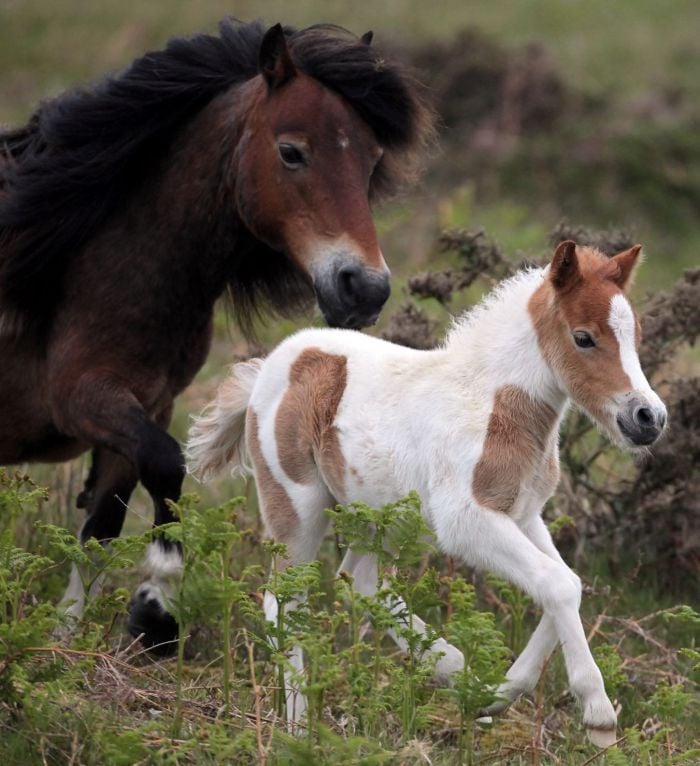
Getty Images
The filly (or young female horse) pictured above is only an hour or so old. Yet despite her young age, she can already hold a steady pose and run along with her mother. As time goes on, she’ll grow even larger and run even faster.
Rats Can Laugh
Have you ever considered tickling a rat? If you decide to go ahead with it, you might be surprised to learn that they laugh back at you. Yes, you read that right! Scientists have found that when rats are tickled on their belly and sides, they produce sounds much like laughter.
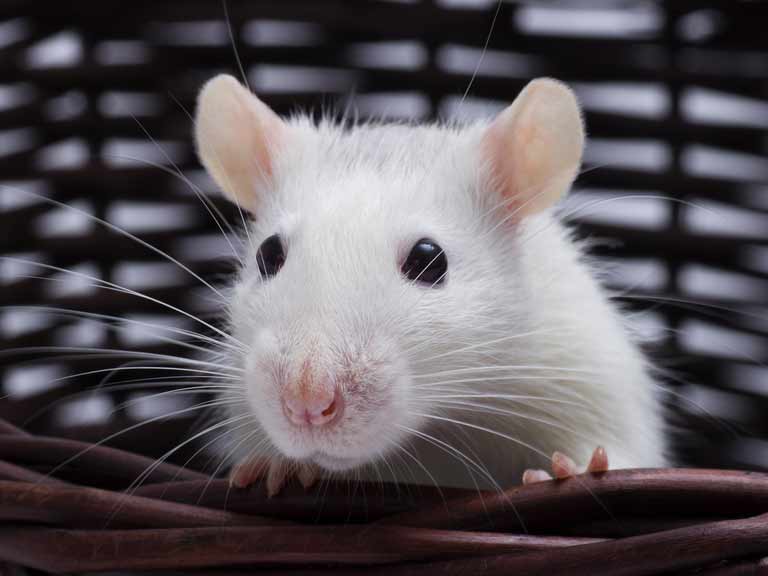
It turns out that humans aren’t the only ones who can fall into a giggle fit when being tickled. Rats know how to share in the fun as well! After learning this, we feel like finding a rat ourselves and tickling their tummy to hear the little rat laughter that comes out.
Grapes are Toxic to Dogs
I know what you’re thinking. Are all dogs allergic to grapes? Yes, they are. Grapes, unfortunately, are toxic to our four-legged friends. When dogs eat grapes, they can become very sick. In severe cases, they can even die.

Getty Images
Although you might have watched your dog eat grapes without any severe symptoms, it’s most likely because they only ate a small amount that didn’t trigger their sensitivity to the fruit. To ensure your dogs’ safety, it’s best to avoid giving them the toxic fruit, or they might end up falling very ill.
Bees Have Hair in Their Eyes
There are loads of interesting facts about bees. For example, bees see colors differently from us, they have five eyes, and they dance to communicate with others. Those are fairly well-known facts, but one that is a bit rarer is the fact that they have hair on their eyes.

Getty Images
These little bits of eyeball hair are important to bees because they can lead them towards plants that need to be pollinated. Bees are immensely important in the process of plant growth. Sadly, however, many bee colonies are vanishing from the ecosystem.
The Red Sweat of Hippos
Hippos don’t sweat in the same way humans do because they don’t have the same sweat glands as us. Instead, they have special glands that release a red oily fluid. As it rolls down their skin, it takes on a reddish color that’s often referred to as bloody sweat.
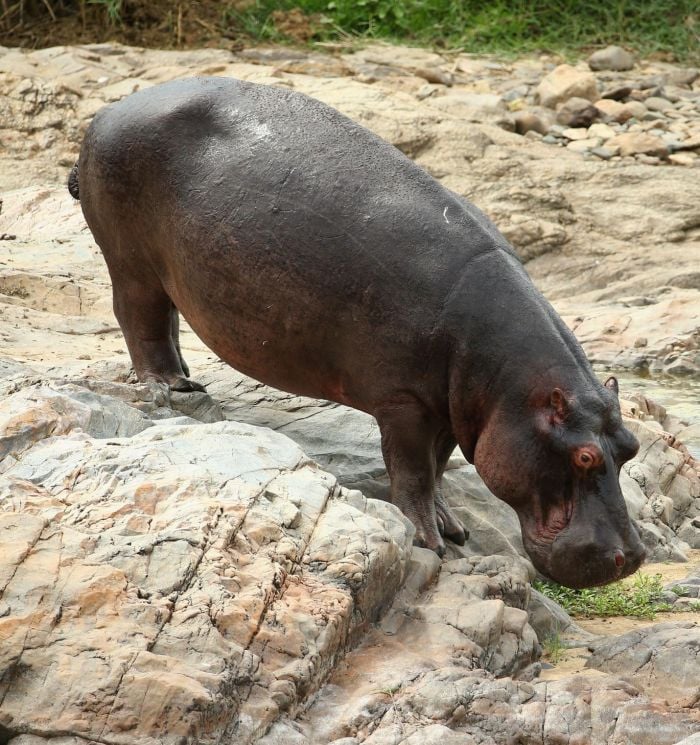
Getty Images
This sticky fluid on the hippo’s body serves as a kind of skin protection against the intense heat. Sweat is a way for hippos to regulate their body temperature. Another way, which you commonly see, is for hippos to spend a lot of time hanging out in the water or mud to cool down.
Cows Have Accents
Humans all over the world have been fascinated by cows for a very long time. Many people have wondered how these creatures manage to communicate with one another. The answer lies in the distinctive ways that they “moo.”
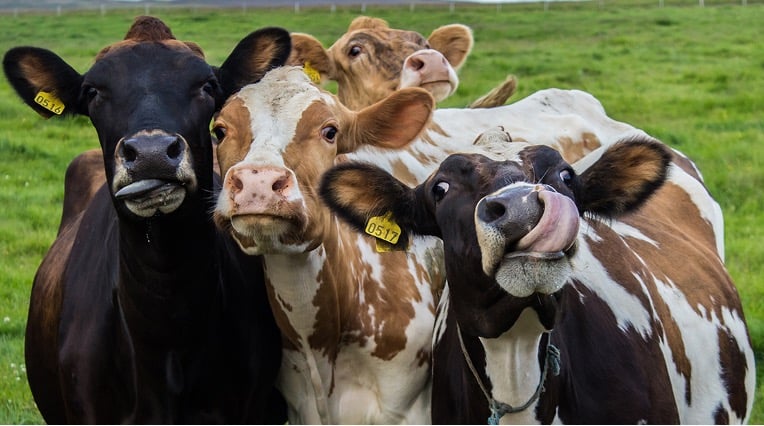
Did you know that cows have different “moo accents”? A recent study from England found that the sound of the cow “moo” changed from north to south. In the north of England, the moo sounds a bit like “mow,” whereas in the south, it sounds like “maa.”
Frogs Drink Water Through Their Skin
Frogs, like humans and plenty of other animals, love to drink water. This miraculous liquid helps keep our bodies functioning and healthy. However, frogs drink it in a far different way. Instead of sucking it up into their mouth, they absorb it through their skin.

Wikipedia
No wonder their skin is always moist! When they’re sitting out there by the stream, they’re also absorbing moisture directly into their bodies. It’s like a constant cool glass of H2O. Pretty impressive, huh? We kind of wish humans had that ability.
Jellyfish Evaporate When Exposed to the Sun
Like dolphins and sharks and whales, jellyfish are meant to be in the sea. Their entire bodies are basically made up of water. When they get too close to the sun or when they get stranded on a beach, it leads to disaster. The water inside of them can evaporate, the cells can burst, and they can die.
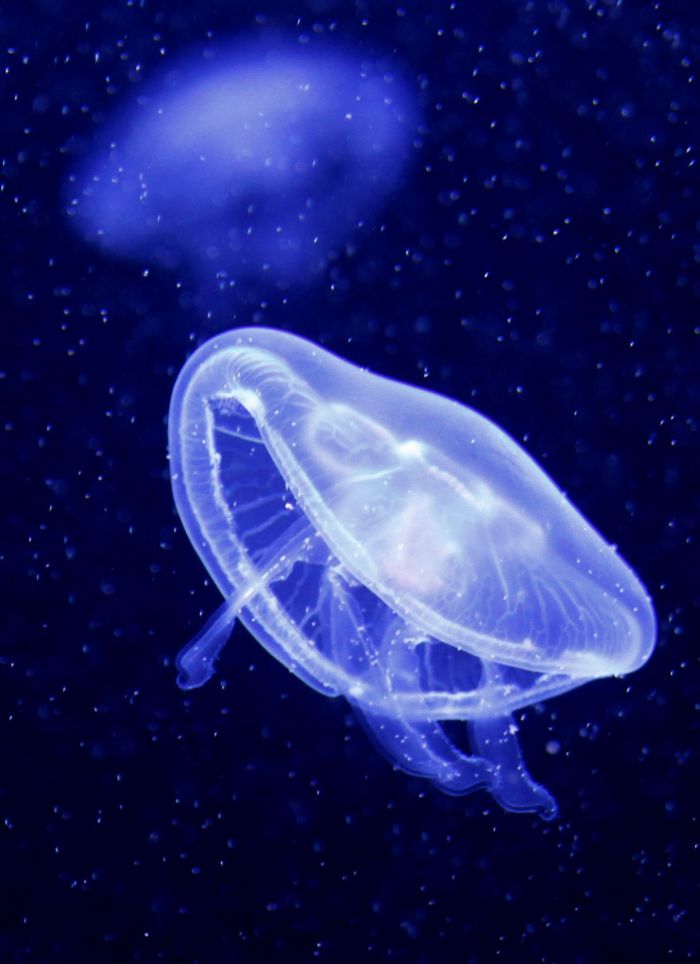
AP Images
Jellyfish don’t have any bones or muscles (just lots of gooey stuff), so they can’t adjust their own body temperature as we do. They also don’t have blood – just a bunch of seawater with nutrients floating around inside!
Chameleons Have the Longest and Most Powerful Tongue on Earth
I bet you didn’t know that the chameleon’s tongue is longer than its whole body. In fact, it can reach up to twice its length! The tongue is attached at the bottom of the mouth and has a sticky tip that’s coated with tiny hairs. This allows them to catch prey.
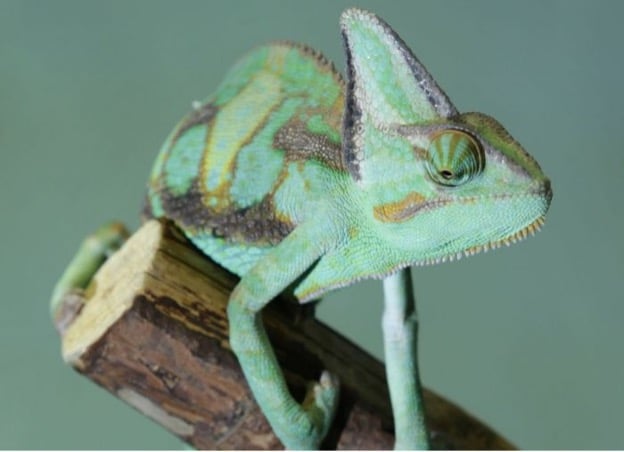
Getty Images
When the chameleon does catch prey – mostly insects, crickets, and grasshoppers – they wrap their tongues around them and pull them back in. But what’s more surprising is that this amazing creature has the most powerful tongue on Earth! It’s unbelievable how this tiny creature can do so well.
Chickens Evolved From Dinosaurs
Although chickens and dinosaurs might not look alike, one came from the other. That’s right – chickens are descendants of dinosaurs. More specifically, theropods (the dinosaur family to which the T. Rex belongs). It seems like all animals are related to one another in the great family tree of life.
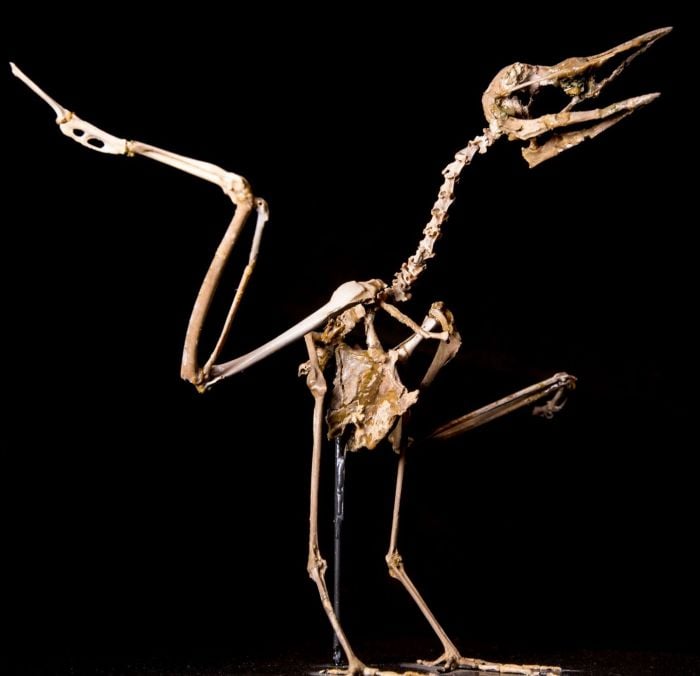
Getty Images
Chickens can be traced back to a feathery creature with legs that lived some 150 million years ago. Next time you sit down to eat fried chicken or chicken salad for dinner, just remember that it’s a really old creature from the past.
Dogs Can Tell If a Person Has Cancer
Dogs are more than just loyal friends. They can also aid in the early detection of cancer. Of the different types of cancers, dogs have the ability to detect lung, breast, and prostate cancers with up to 97% accuracy.
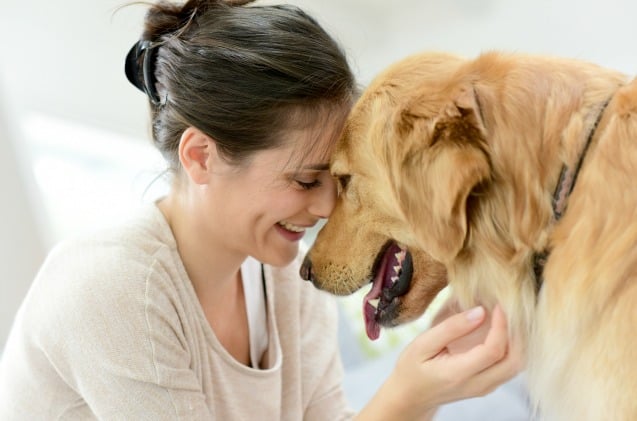
PetGuide
Of course, this doesn’t mean your pup has psychic powers or anything – it’s because dogs can sense chemicals in particular areas with dying cells. So when you notice your dog sniffing beside you or around your mouth, don’t brush off his strange behavior. Your dog might just be telling you something important.
Penguins Are Loyal to Their Mate
You may have heard that penguins are loyal to their mate, which is true. However, this might not be what you think it means. Most penguins mate for life with the same partner, making nests together to hatch their eggs. They also take care of their chicks together!
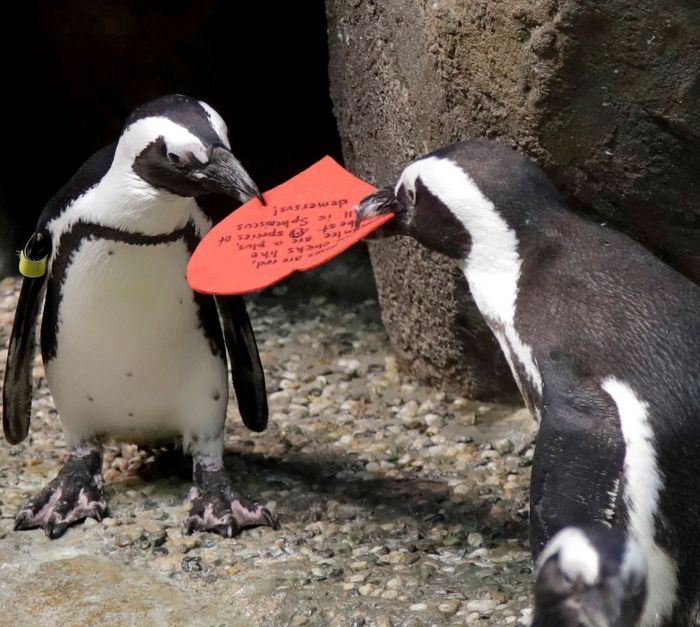
AP Images
What’s more interesting is that a penguin’s caring nature is similar to many human parents. In some species, females will stay at home while males go out to fish. Other species, like the emperor penguins, have the male staying at home to watch the babies.
Pandas Spend Most Of Their Days Eating
Pandas are a kind of bear that spends up to half their day eating. They eat all the time, yet they never seem to get full! These adorable creatures can’t help themselves when it comes to food. They love to snack on ants, termites, and bamboo. Especially bamboo!
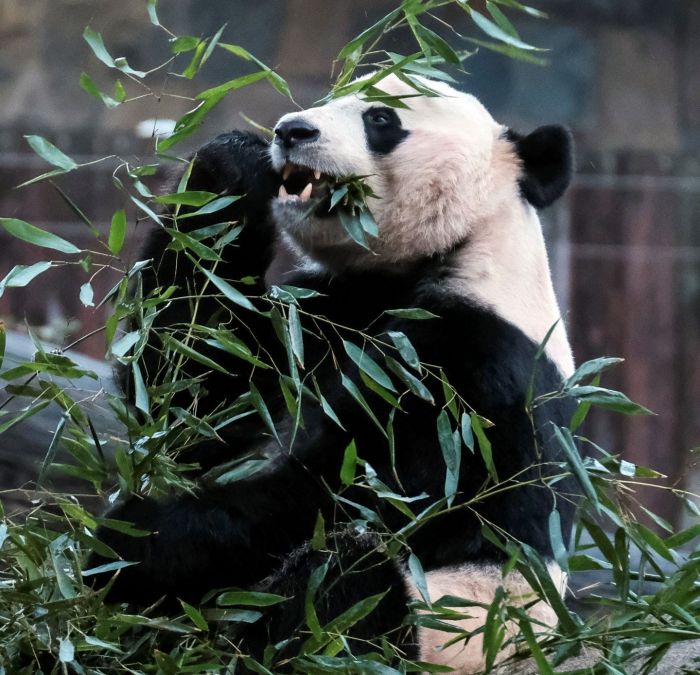
AP Images
Pandas have an insatiable appetite for food, so if you happen to see one around, be sure not to offer them anything tempting. Chances are that they’ll take it from you and then come back for more.
Sheep Pupils are Rectangular
Some people may not believe it, but goats and sheep have rectangular pupils. That’s right, the insides of their eyes are not circular like humans, but more like an elongated box. Although it might seem odd at first, it’s true.
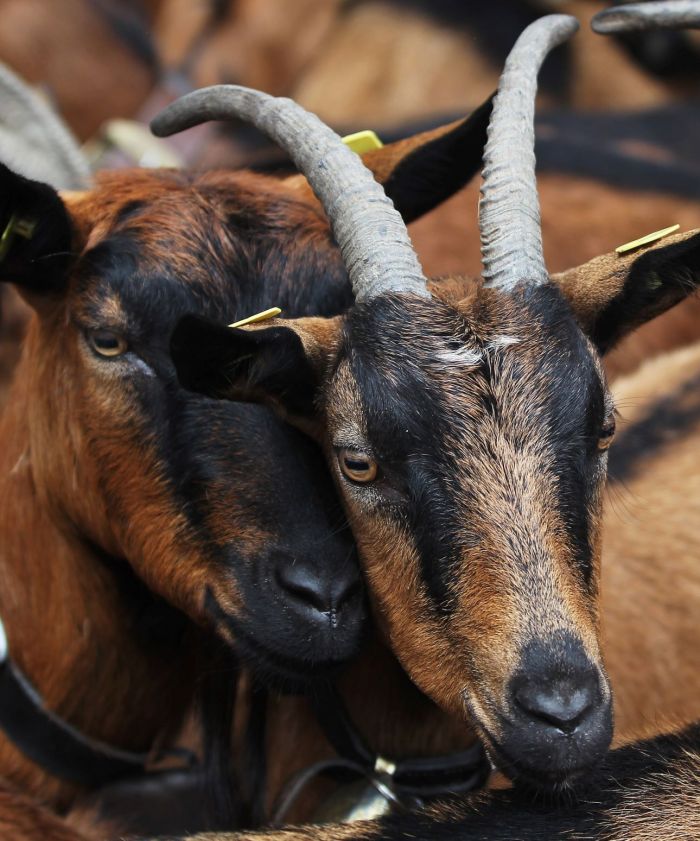
Getty Images
The strange shape of sheep pupils is the result of bright light coming in from the front and sides. It aids animals like sheep who are awake day and night and are prone to predators. The expanded rectangular pupils allow them to see better at night and prepare themselves for danger.
Camels Can Survive Without Water for Several Months
When there’s no water around, the only mammal species that can survive for long without it is the camel. For us humans, going without water for a few days will quickly lead to disaster. For camels, however, they can chug along for up to seven months.
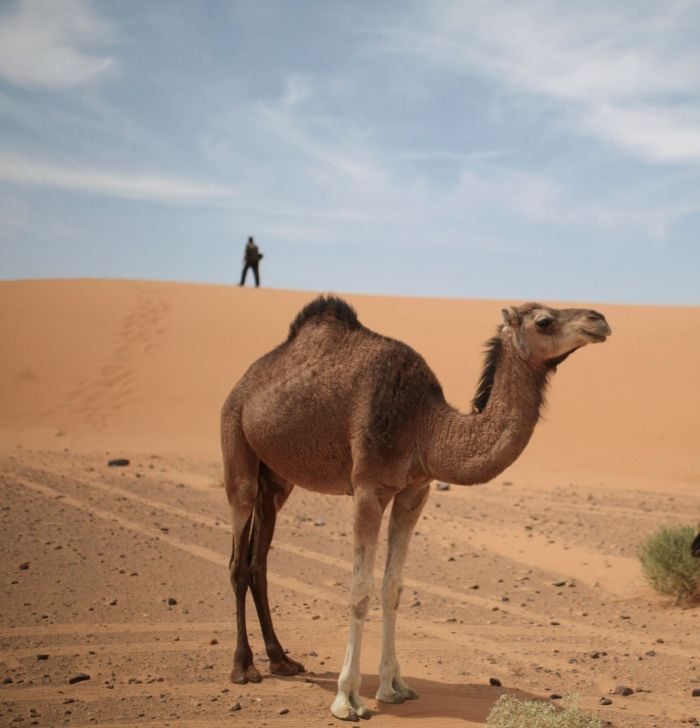
AP Images
The question is, how? Well, camels can do this by storing fat in their humps for an energy source. They also produce concentrated urine, which reduces the amount of liquid lost from their body. Apparently, these animals are geniuses when it comes to survival!
Giraffes Only Sleep for Half an Hour
Giraffes are beautiful creatures, and many people love them because of their long necks and spotted patterns. We often see them lounging around to pass the time. But what we didn’t know is that these animals rarely fall asleep.

Getty Images
Giraffes only doze off for about half an hour, usually in the late afternoon or early evening after eating. Can you imagine that? Humans need at least 6-8 hours of sleep to function well, but these majestic mammals need a whole lot less to go about their day.
Mother Dolphins Sing to Their Unborn Babies
Dolphins are well-known for being intelligent sea creatures. But that’s not all they are known for. Alongside their smarts, dolphins have also proven to be exceptional mothers. For instance, mother dolphins hum to their babies to help them learn their language.

AnimalHumane
Scientists have found that mother dolphins teach their ‘signature whistle’ to their unborn babies in the womb. It seems that dolphins familiarize their babies with the kind of world they will be born into. Being able to recognize different whistle sounds can help with survival.
Squirrels Adopt Orphaned Relatives
Who would have thought that squirrels are surprisingly empathetic and altruistic? If you’re in need of a heartwarming discovery, we’ve got you covered. In a recent study, researchers discovered that squirrels adopt their orphaned relatives.

Getty Images
The scientists found that when one of these rodents was given a new litter of babies to feed, it would also take care of the young who lost their mothers at some point during the year. This research proves once again that we have so much more to learn about our furry friends.
The Oldest Tortoise on Earth
The oldest tortoise on earth is 188 years old and still going strong. The Aldabra Giant Tortoise, named Jonathan, lives on the island of Saint Helena in the South Atlantic Ocean. Its long life makes him one of the oldest living creatures in the world!
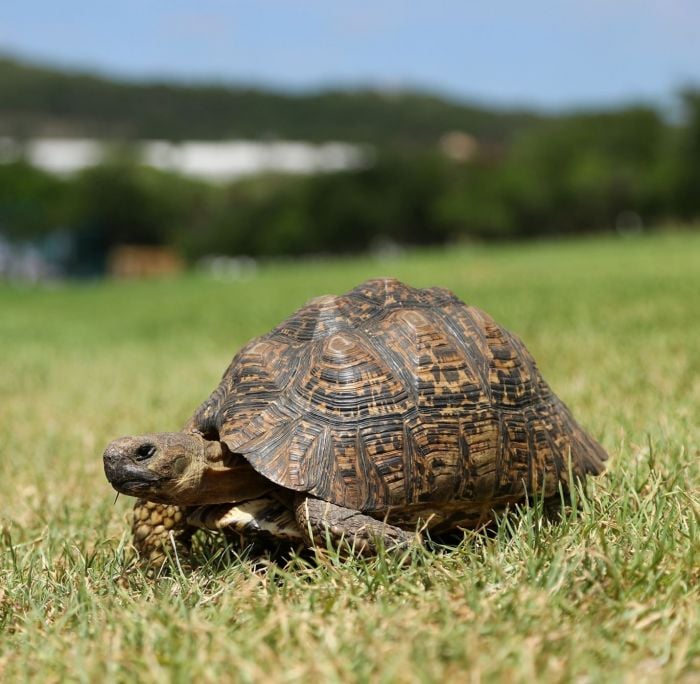
Getty Images
Even though he’s so old, his owner says that “he moves around well.” We’re not sure how much longer he’ll be able to keep up with all his traveling adventures, but for now, it’s clear that this guy is just too cool.
Baby Elephants Suck on Their Trunks
We’re all familiar with babies sucking on their pacifiers or their thumbs. If you’ve ever wondered if there were animals out there that did the same, then you’re not alone! This information will end your curiosity.
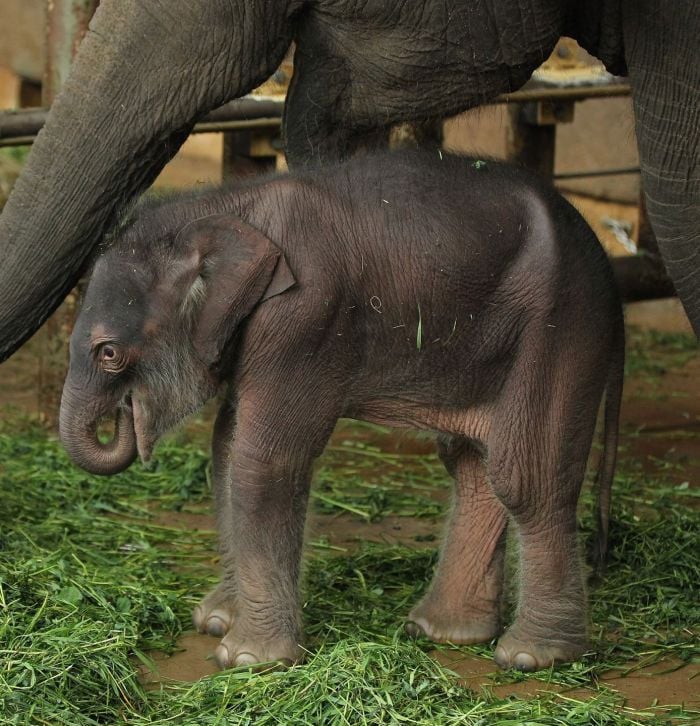
Getty Images
Though elephants don’t have thumbs, baby elephants use their trunk and mouth to suckle. This is a fascinating and strange thing that we all thought was just a myth. But it turns out that it’s true. The photo above adds to the proof.
A Newborn Koala Is the Size of a Jellybean
The Australian Koala is one of the most famous animals in the world. They are adorably cute, fuzzy, and love to eat eucalyptus leaves. But what you might not know about this amazing animal is what size they are at birth. They’re small, like, incredibly small.
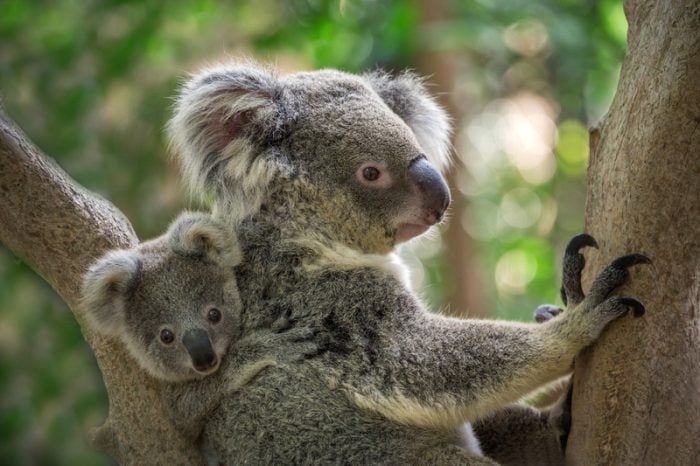
Jeep2499 - Dreamstime.com
Newborn koalas weigh less than a jellybean and fit comfortably in your hand. These precious babies will eventually grow up to 2 feet long but will never get any bigger than 30 pounds (13 kilograms). During their development, baby koalas reside in their mother’s pouch.
Horses Prefer to Sleep While Standing
Contrary to what one might believe, horses don’t lie down when they sleep. They prefer to take naps while standing so they can be ready for any predators that try to sneak in for an attack. If they were lying down, it would be more difficult to get away.
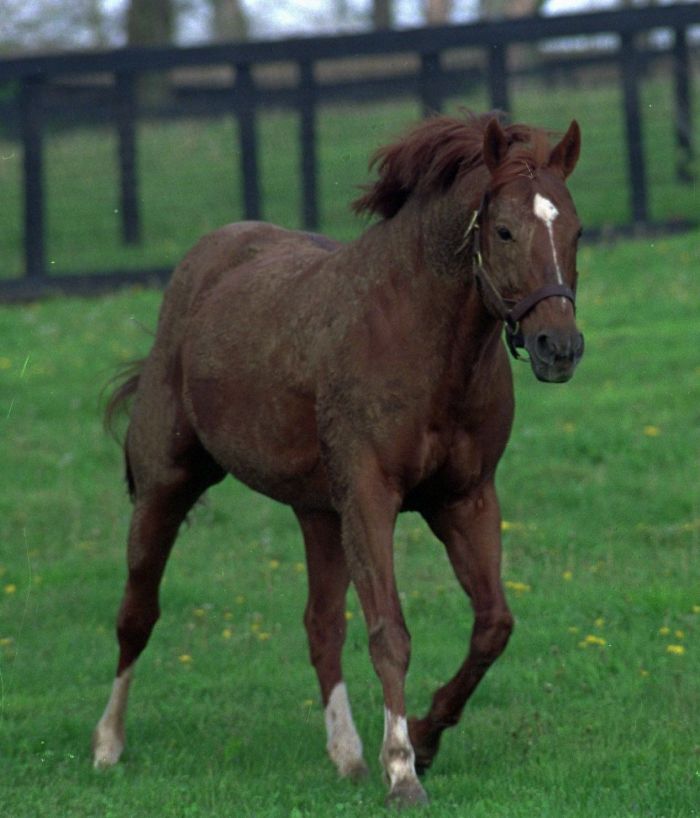
AP Images
Although some people might walk in their sleep, it’s not something that all humans do. Lying down is just a lot more relaxing and safe – many of us would fall over if we tried to sleep while standing. Horses are built in a particular way where that isn’t a problem.
From Gray To Pink Feathers
As the saying goes, “you are what you eat.” A dramatic example of that is the flamingo. The flamingo’s pink color comes from their diet rather than some strange ability to manage their own color. Flamingos eat shrimp, crabs, snails, and other crustaceans that contain a red pigment called carotenoid.
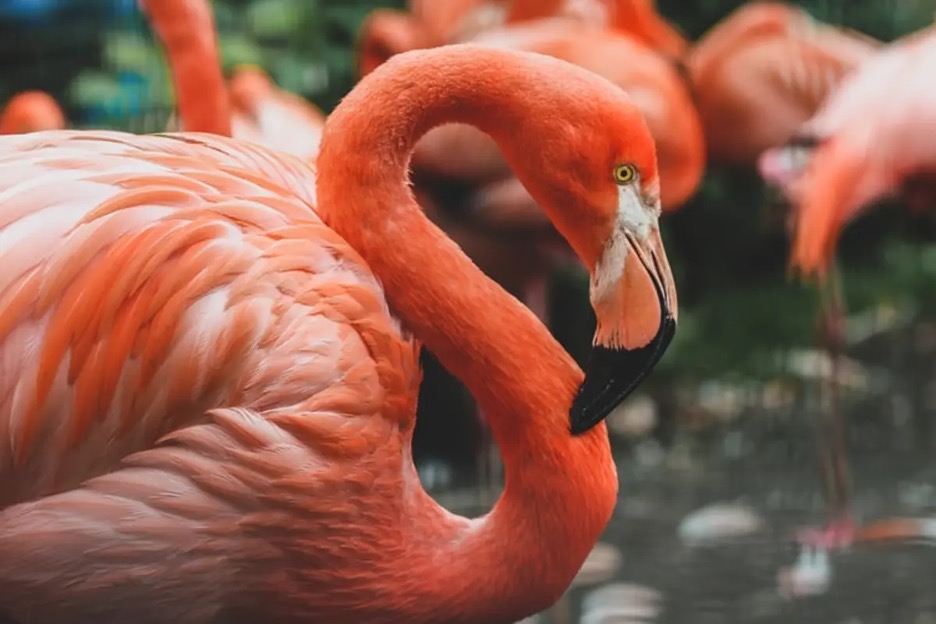
bonami.cz
These carotenoids give off a reddish-orange to pink color, which then gets absorbed by the feathers on the flamingo’s body. Newborn flamingos, however, don’t have that pinkish color yet. They’re born grey and then, through eating, take on that pink hue.
The Hunting Lioness
Male lions have been historically perceived as masculine hunters, but it turns out that female lions do almost all of the hunting for their pride. Male lions may occasionally kill an animal, but they can’t bring it back to the group without help from the females.
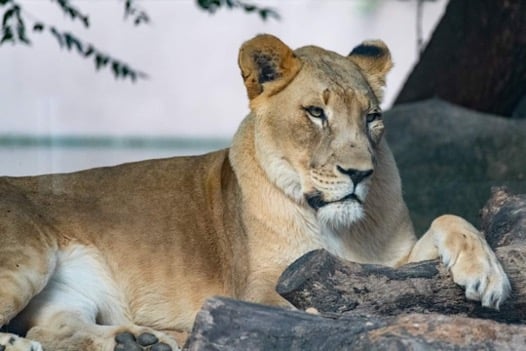
Matthew Griffiths/ Houston Zoo
That’s because male lions spend most of their time on security detail, making sure the territory is safe. Lionesses, in turn, are the skilled, stealthy, and agile hunters able to bring home food to the cubs. Their fierce power is pretty impressive. Way to go!
Prairie Dogs Greet Each Other With a Kiss
Prairie dogs, like humans, are very social animals. Whenever they pass by each other, they can’t help but stop for a greeting or two. But unlike some human cultures that go for a handshake or a hug, prairie dogs are more intimate. They go for a kiss.
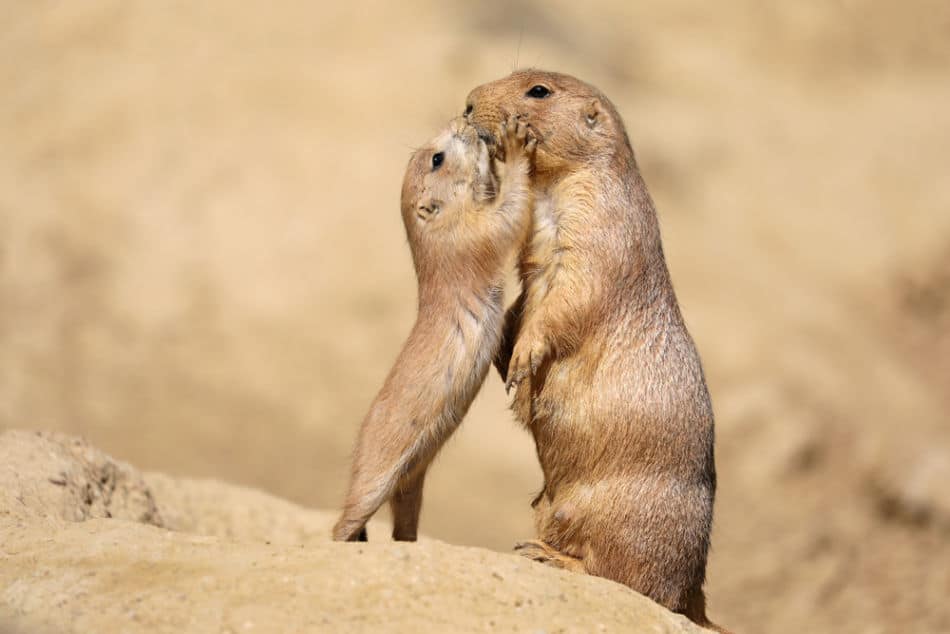
Their kiss is a bit different than most human kisses, though. Instead of mouth to mouth, prairie dogs like to rub their noses together and lock their teeth. This little ground squirrel found in North America and Mexico is just too cute.
Bat’s Give Birth Upside Down
Bats are known to hang upside a lot, but do they do everything in that position? It seems so. When a female bat is about to give birth, she hangs upside down on a branch or cave ceiling. Shortly after, the baby bat is born, and the mom catches it before it falls to the ground.
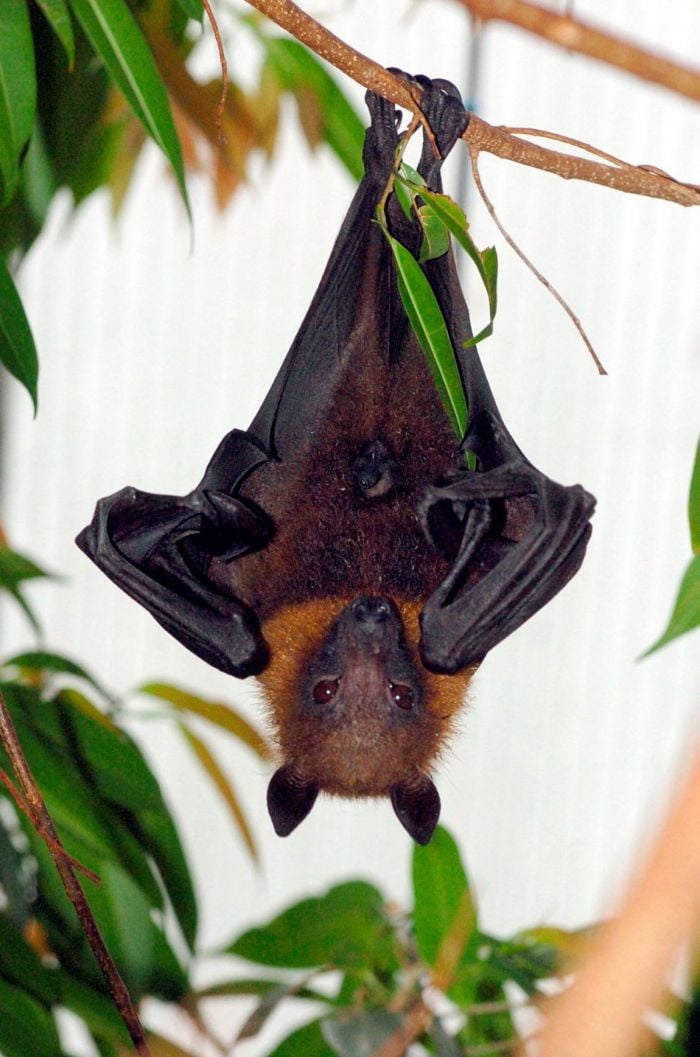
AP Images
Afterward, the baby hangs onto its mother’s body until they’re strong enough to fly independently. Pretty remarkable, huh? You might be wondering what it would be like if humans could do that. Or you might not. Either way, we can’t and it’s best to leave it to the bats.
Nonstop Growing of Beaver’s Teeth
Beavers are known for their large front teeth. These teeth help them cut down trees and build up dams with sticks, branches, and mud. This process creates ponds on land where they can store water for the winter months. Genius!
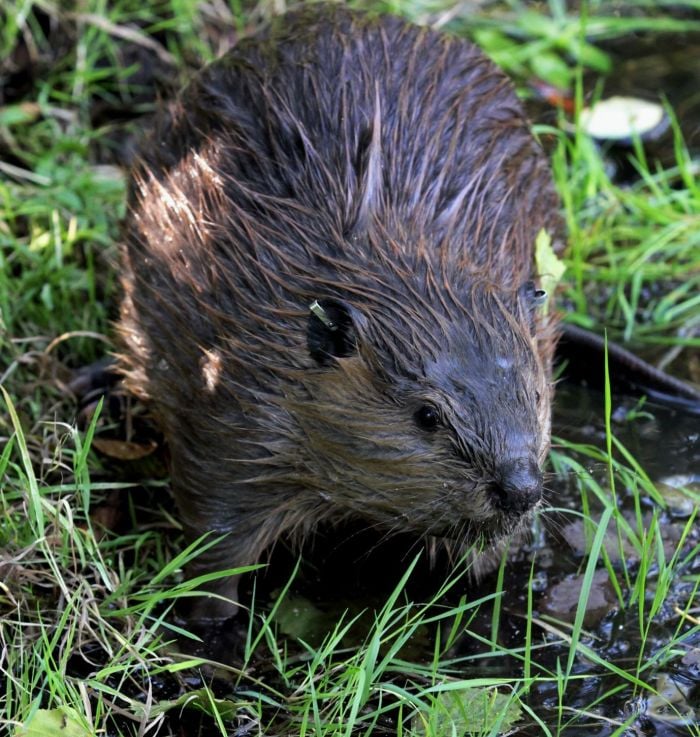
AP Images
All that chewing can damage their teeth, but luckily, beaver teeth never stop growing. What happens if they get too big? It rarely happens because the hard material that beavers are always chewing on slows down the growth.
Hummingbirds Can Fly Backwards
Hummingbirds are amazing flyers that can flap their wings at incredibly fast speeds. Alongside that, they have a unique support joint that allows them to move in any direction – up, down, front, or back. They can also hover in place.
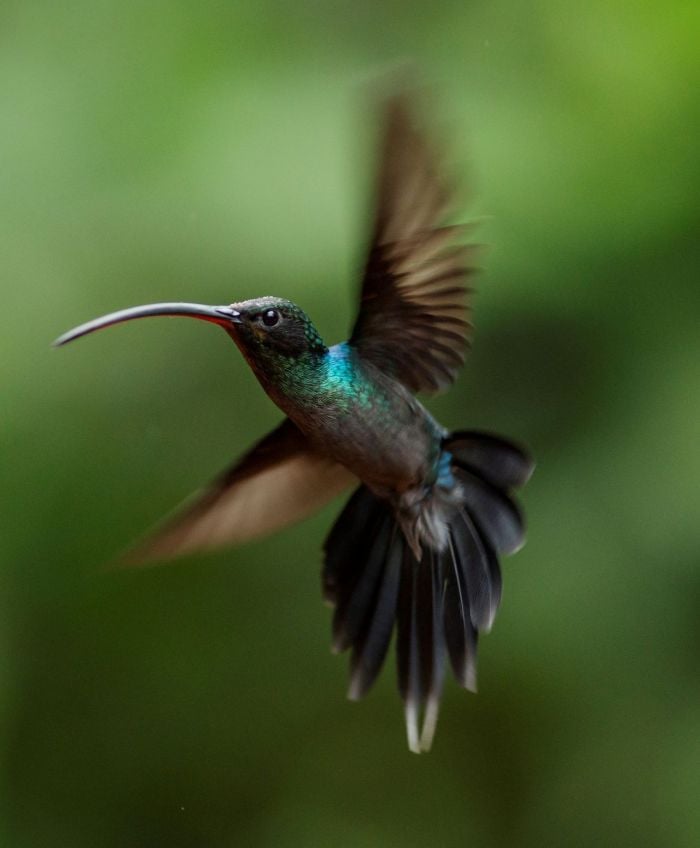
Getty Images
How they feed off nectar from flowers is also fascinating. Using their long beaks like a plastic straw, hummingbirds manage to suck out the sweet liquid! Next time you come across this magnificent creature in a garden somewhere, spend some time admiring how great of a flyer it is.
Porcupines Have 30,000 Quills for Defense
In the wild, porcupines are usually found in wooded areas and near bodies of water. The length of their body ranges 24 to 36 inches and weighs anywhere from 10 to 35 pounds. Their quills, one of their most unique features, helps to protect them from predators. When they’re threatened, the quills release!
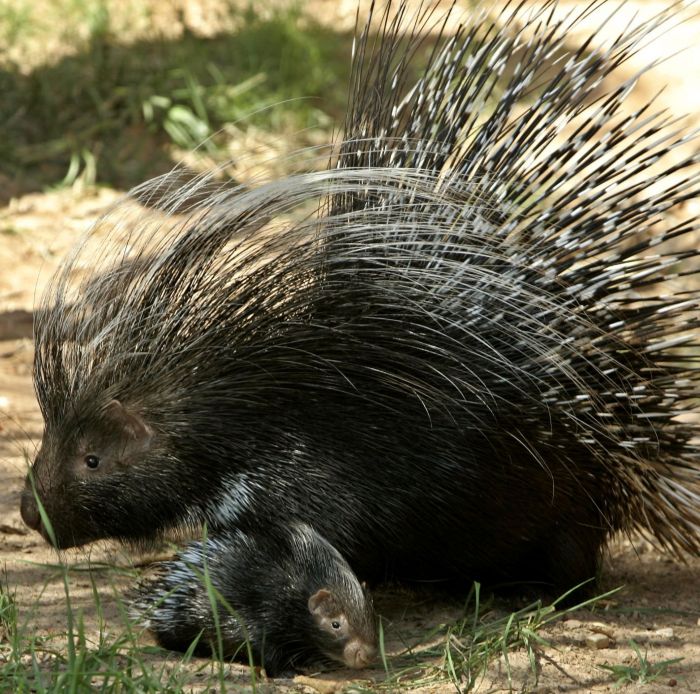
AP Images
A porcupine has up to 30,000 quills with 5-inch barbs! That’s enough to make larger animals like a dog or a wolf think twice before attacking. If you’re thinking of getting up close and personal with one of these unique little creatures, it’s best to take some advice from the dogs and wolves and stay away.
Ostrich Eyes Are As Big As Billiard Balls
The ostrich is the largest and fastest two-legged bird in the world, and its eyes are no exception. Its eyes have a diameter similar to that of the average billiard ball! That makes them nearly impossible to ignore.
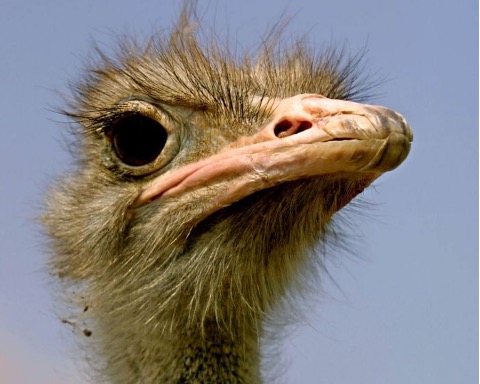
Getty Images
The large size of the ostrich eyeball allows it to live on land. These eyes have photoreceptor cells that help to spot predators that are approaching from a distance. So if you ever find yourself nearby, just be warned that this bird will see you coming from far away.
Sheep Outnumber People in New Zealand
New Zealand is well-known for its sheep-loving culture. Therefore, it shouldn’t be too big of a surprise to learn that there are more sheep than people. The country has just over 4 million people. How many sheep are in New Zealand? At least 26 million. Woah!
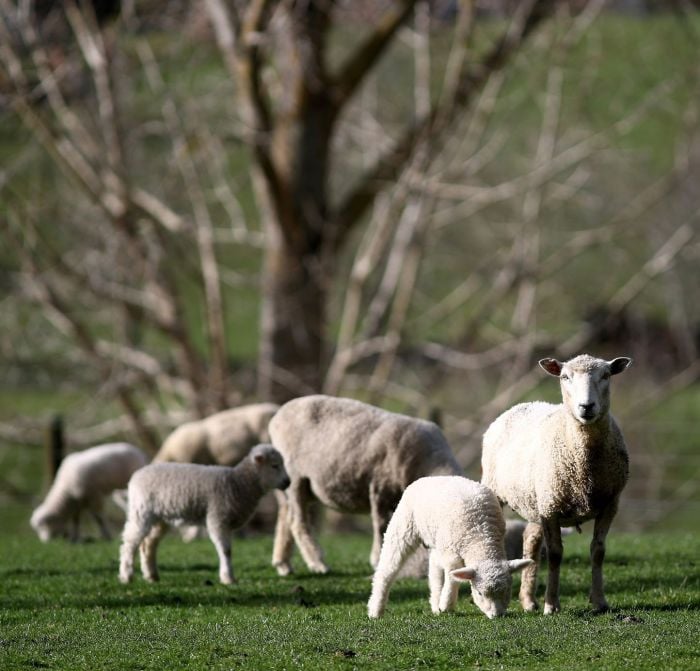
Getty Images
The exact number of sheep changes from year to year. This is due to droughts and other factors that cause farmers to decide to butcher their livestock. It seems a bit creepy, though, to think just how much sheep outnumber humans on that small island.
Great White Sharks Need to Move to Breathe
Although many people are scared of all sharks, not all sharks are made equal – especially when it comes to breathing. Nurse sharks and tiger sharks can stop moving or even bury themselves in the seafloor and still breathe. Other sharks aren’t so lucky.
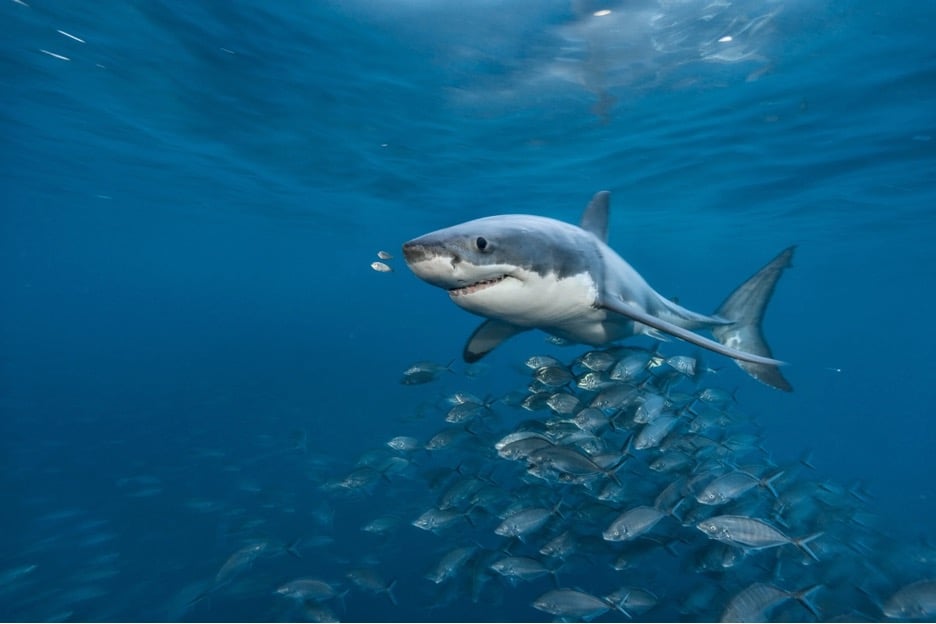
BRIAN J. SKERRY / NATIONAL GEOGRAPHIC IMAGE COLLECTION
Great white sharks (as well as whale sharks and mako sharks) can’t stay still and breathe. They need to keep moving with their mouth open to allow water to pass through their gills. So although not all sharks need to move constantly, great whites certainly do.
